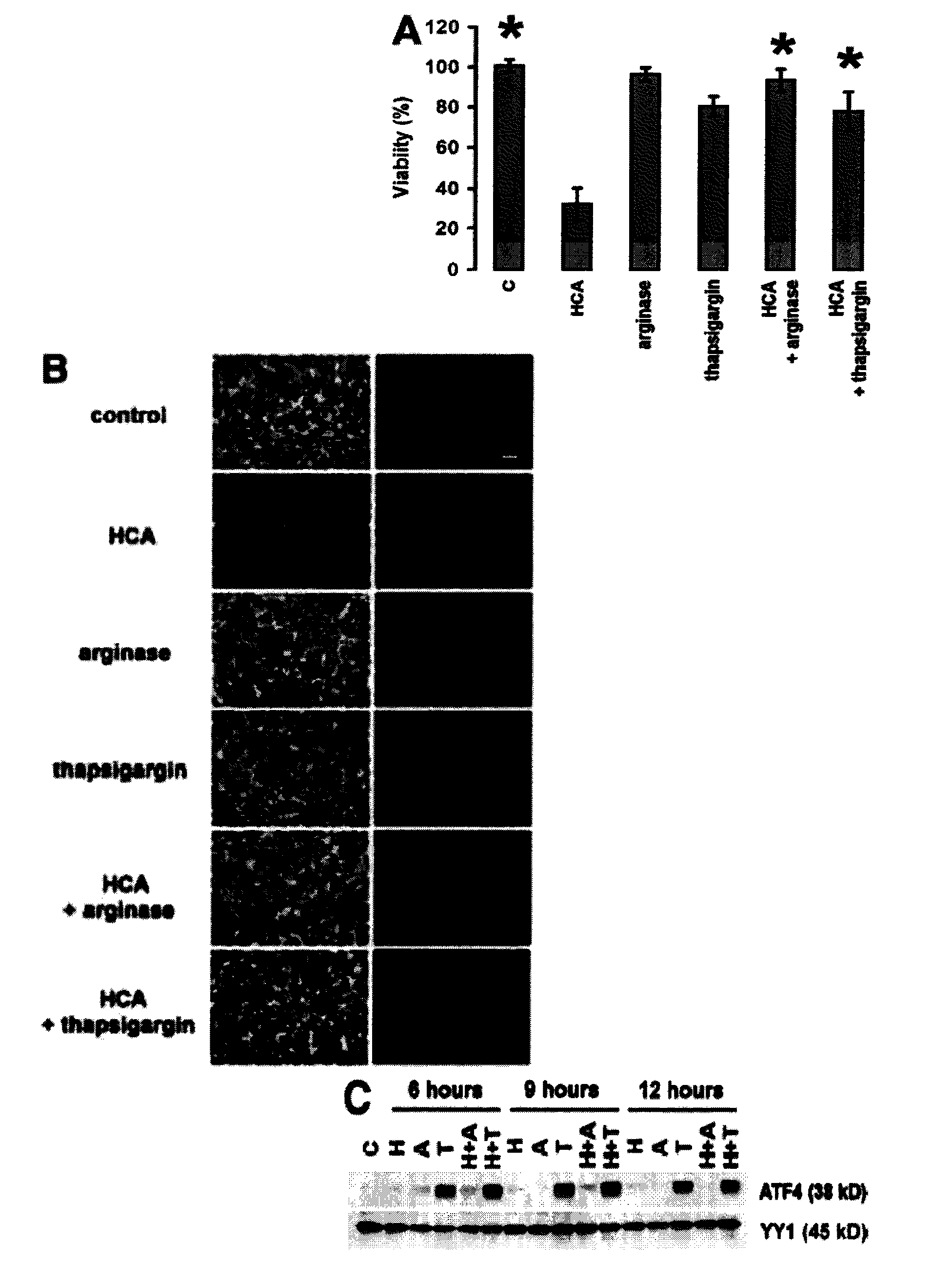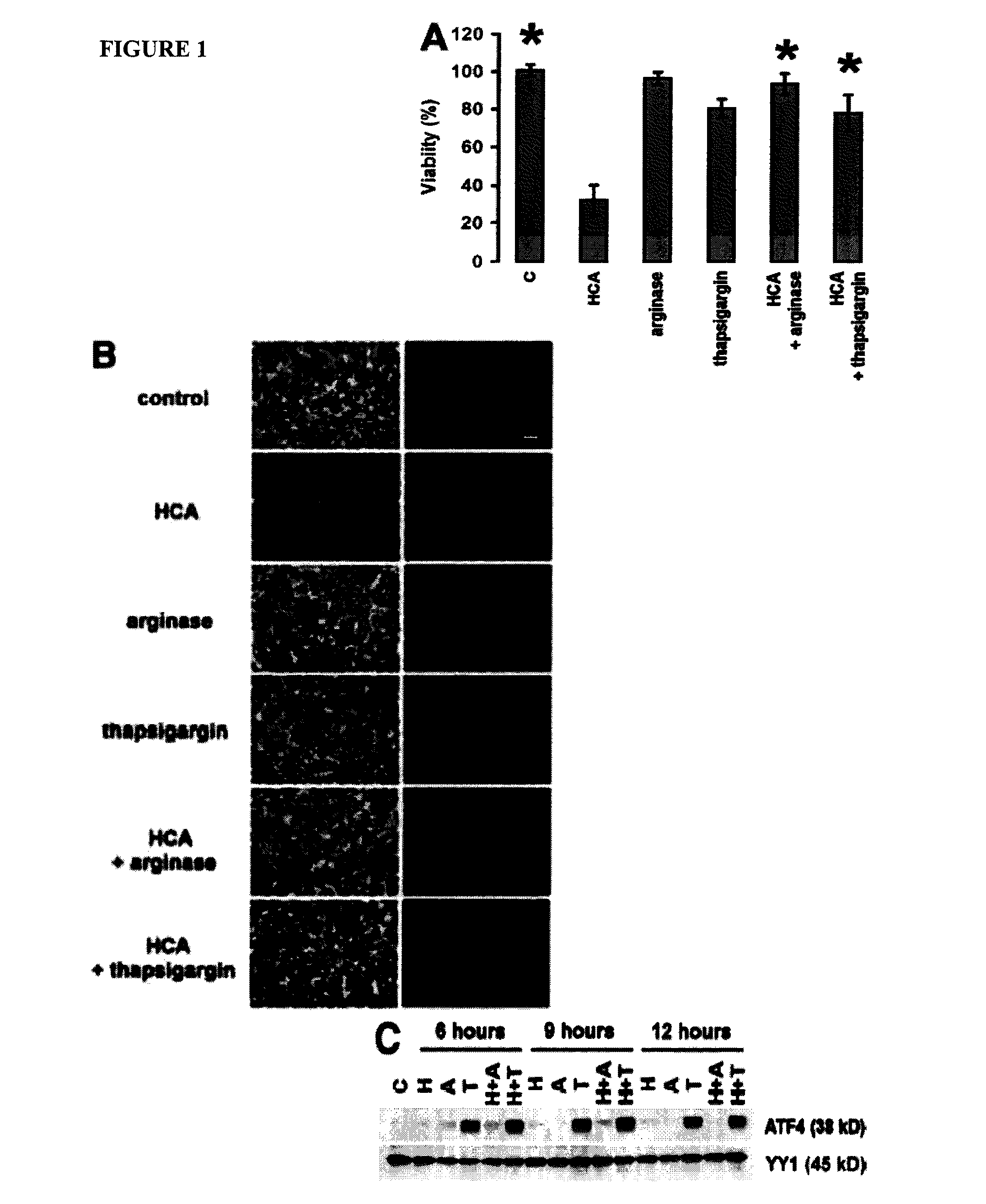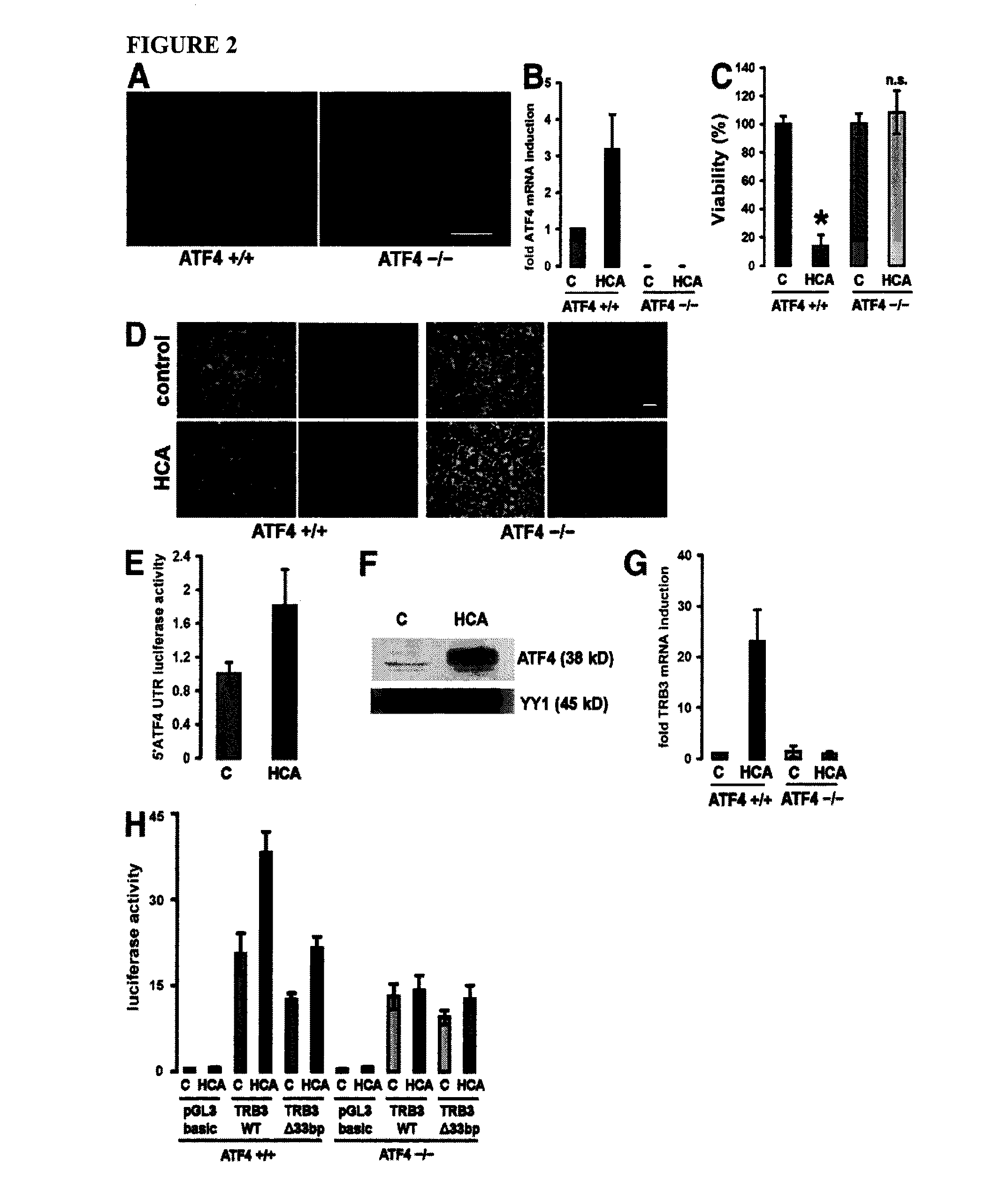ATF4 Inhibitors and Their Use for Neural Protection, Repair, Regeneration, and Plasticity
- Summary
- Abstract
- Description
- Claims
- Application Information
AI Technical Summary
Benefits of technology
Problems solved by technology
Method used
Image
Examples
example 1
Amino Acid Depletion and Thapsigargin Treatment Induce ATF4 and Protect Embryonic Cortical Neurons from Oxidative Stress-Induced Cell Death
[0113]Arginase and thapsigargin led to nearly complete protection from neuronal cell death (FIGS. 1, A and B) and to accumulation of ATF4 protein (FIG. 1 C). Interestingly, oxidative stress alone was shown to be was sufficient to induce ATF4 protein levels (FIG. 1 C).
example 2
Cortical Neurons from ATF4− / − Brains are Resistant to Oxidative Stress-Induced Cell Death
[0114]To verify that the protection by arginase and thapsigargin requires ATF4, cortical neurons from brains of embryonic ATF4− / − mice (E 15.5) were cultured. Immunohistochemical analysis (FIG. 2 A) using an antibody to microtubule-associated protein 2 (MAP2; which stains neural dendrites) showed that basal viability and morphology of cell bodies and dendrites did not display any differences between ATF4+ / + and ATF4− / − neurons. ATF4 mRNA was found to be induced in ATF4+ / + neurons after oxidative stress and its absence in ATF4− / − neurons (FIG. 2 B) was confirmed.
[0115]Susceptibility to oxidative stress induced by the glutamate analogue homocysteate (HCA) in ATF4+ / + and ATF4− / − cortical neurons (FIGS. 2, C and D) was then examined. ATF4− / − neurons were found to be significantly protected from oxidative stress-induced death. ATF4− / − neurons demonstrated enhanced resistance, as monitored by MTT redu...
example 3
Microarray Analysis Reveals that ATF4 Regulates a Subset of Genes that are Induced in Response to Oxidative Stress
[0118]To begin to examine whether ATF4 functions primarily as a repressor or activator in neurons and to determine the extent to which these ATF4-regulated genes function similarly in fibroblasts and neurons, a global analysis of gene expression using microarrays in ATF4 and ATF4− / − neurons (FIG. 3 A) was performed. More specifically, (a) the physiological genomic effect of ATF4 knockout (comparing ATF4− / − with ATF4+ / + neurons), and (b) the effect of ATF4 knockout on the response to oxidative stress (comparing ATF4− / − with ATF4+ / + neurons after HCA treatment; FIG. 3 B and FIG. 10) was assessed. At the chosen statistical threshold (5% false discovery rate), 136 probes were down-regulated in ATF4− / − versus ATF4+ / + neurons, compared with 53 that were up-regulated, suggesting a role for ATF4 as a transcriptional activator. Functional gene ontology categories overrepresented ...
PUM
| Property | Measurement | Unit |
|---|---|---|
| Plasticity | aaaaa | aaaaa |
| Stress optical coefficient | aaaaa | aaaaa |
| Level | aaaaa | aaaaa |
Abstract
Description
Claims
Application Information
 Login to View More
Login to View More - R&D
- Intellectual Property
- Life Sciences
- Materials
- Tech Scout
- Unparalleled Data Quality
- Higher Quality Content
- 60% Fewer Hallucinations
Browse by: Latest US Patents, China's latest patents, Technical Efficacy Thesaurus, Application Domain, Technology Topic, Popular Technical Reports.
© 2025 PatSnap. All rights reserved.Legal|Privacy policy|Modern Slavery Act Transparency Statement|Sitemap|About US| Contact US: help@patsnap.com



